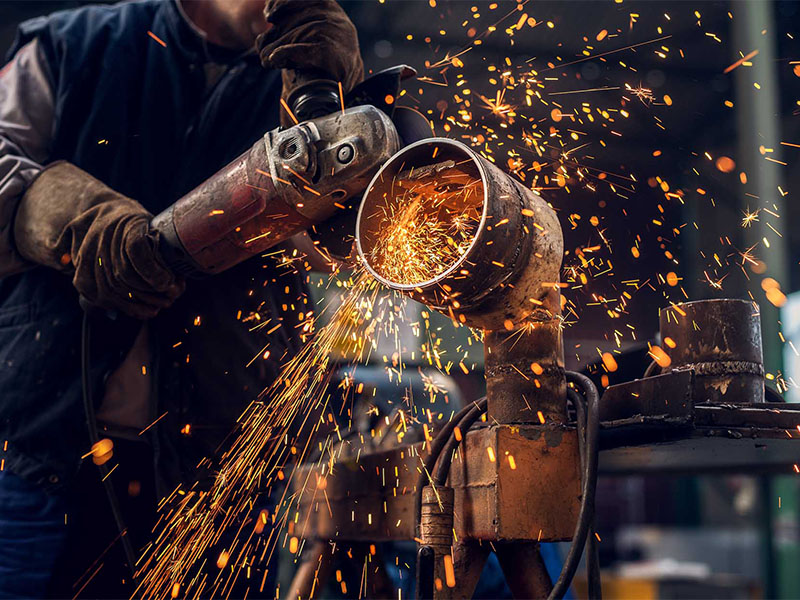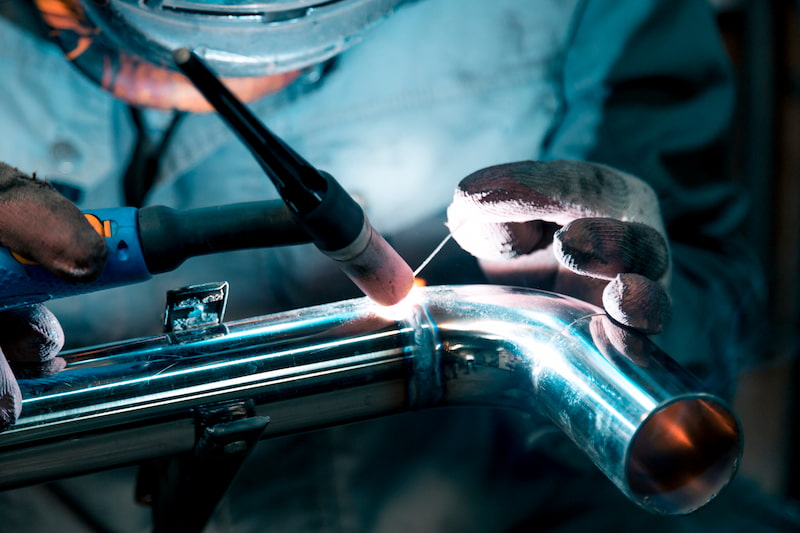Everything about Welding: Key Insights Into Techniques and Finest Practices for Success
Welding incorporates a variety of methods, each matched for specific materials and applications. Recognizing these approaches, such as GMAW, SMAW, and TIG, is vital for accomplishing excellent outcomes. Additionally, the right devices and security methods can not be forgotten. As prep work and troubleshooting play important duties in the welding procedure, grasping these elements can considerably improve the high quality of the end product. What are the essential factors that assure an effective weld?
Understanding Various Welding Techniques
Welding techniques encompass a range of approaches, each fit to certain applications and products. Among one of the most common techniques are Gas Metal Arc Welding (GMAW), Protected Metal Arc Welding (SMAW), and Tungsten Inert Gas Welding (TIG) GMAW, likewise called MIG welding, is popular for its speed and flexibility, making it ideal for slim products. SMAW, or stick welding, is preferred for its simplicity and performance in exterior environments, especially with thicker steels. TIG welding offers precision and control, making it ideal for intricate work and non-ferrous steels (Belgrade Welding). Each technique has its special advantages and factors to consider, permitting welders to choose the very best method based upon the job's requirements, material kind, and preferred results. Comprehending these strategies is necessary for successful welding
Vital Welding Tools and Tools
While various welding methods need details skills, the right devices and tools are similarly vital for attaining high quality results. Important welding devices includes welding devices, which vary depending upon the strategy-- such as MIG, TIG, or stick welding. Protective gear, consisting of handwear covers, headgears, and aprons, assurances safety and convenience throughout the process. Additionally, fixtures and clamps help secure products in position, making sure accuracy in welds. Consumables like welding rods, wire, and securing gas are additionally critical elements that affect the top quality of the weld. Tools such as cutters and mills promote surface prep work and post-weld finishing, adding to a professional outcome. Purchasing high-grade tools inevitably improves the performance and performance of welding projects.
Security Practices in Welding
Correct security practices are necessary in the welding market to safeguard employees from prospective dangers. Welders must use suitable individual protective tools (PPE), including helmets with appropriate shading, handwear covers, and flame-resistant garments. Adequate ventilation is crucial to decrease exposure to hazardous fumes and gases created throughout the welding process. Furthermore, workers should be educated in the appropriate handling of welding equipment to avoid crashes. Fire security actions, such as maintaining flammable products far from the welding location and having fire extinguishers easily available, are necessary. Routine examinations of equipment and work areas can assist identify prospective hazards before they cause crashes. By sticking to these safety techniques, welders can create a more secure working setting and reduce threats related to their profession.
Preparing Products for Welding
Preparing products for welding is a vital step that substantially affects the top quality and integrity of the end product (Welding). Correct preparation includes cleansing the surfaces to eliminate contaminants such as oil, rust, and dirt, which can compromise the weld. Methods such as grinding, fining sand, or utilizing solvents are commonly employed to attain a clean surface. Furthermore, making certain that the products fit together well is necessary; spaces can bring about weak welds. It's also important to think about the alignment and positioning of the components, as this will influence the convenience of welding and the last result. Selecting the ideal filler material and ensuring compatibility with the base steels is crucial for accomplishing solid, long lasting welds.
Tips for Achieving High-Quality Welds
Achieving premium welds needs attention to detail and adherence to ideal techniques throughout the welding procedure. Proper joint preparation is important, guaranteeing surface areas are clean and complimentary from contaminants. Picking the ideal filler material and welding strategy based upon the base metals is important for ideal bonding. Preserving regular traveling speed and angle while welding can avoid defects and advertise harmony. Additionally, controlling heat input is vital; excessive heat can bring about warping and deteriorated joints. Frequently evaluating the welds during the procedure permits immediate adjustments if necessary. Utilizing proper post-weld therapies, such as cleansing and stress relief, can boost the durability and integrity of the weld, ultimately making sure an effective end result.
Troubleshooting Typical Welding Issues
Welding often offers challenges that can impact the quality and integrity of the end product. Usual problems such as porosity, inconsistent weld beads, and getting too hot can arise, each calling for details fixing strategies. Comprehending these problems is important for welders to boost their abilities and accomplish excellent outcomes.
Porosity Problems Clarified
Although porosity can typically be neglected, it stays a crucial concern in welding that can jeopardize the integrity of an ended up item. Porosity describes the presence of little gas pockets within the weld grain, which can lead and deteriorate the joint to premature failing. This issue generally emerges from pollutants, moisture, or inappropriate shielding gas insurance coverage throughout the welding process. To reduce porosity, welders should validate that the base materials are tidy and completely dry, use appropriate securing gases, and maintain consistent welding criteria. Frequently evaluating the equipment and setting can likewise help identify possible issues prior to they show up in the weld. Attending to porosity successfully is essential for achieving solid, long lasting welds that fulfill quality requirements.

Inconsistent Weld Beads
Inconsistent weld beads can greatly affect the top quality and stamina of a completed product. Different factors contribute to this issue, consisting of incorrect check here travel speed, incorrect amperage settings, and irregular electrode angles. When the welder moves as well swiftly, a bead might appear narrow and do not have infiltration, while moving also gradually can trigger too much accumulation. In addition, using the wrong amperage can cause either damaging or extreme spatter, both of which concession weld honesty. The welder's technique, such as inconsistent torch activity, can additionally result in irregular grain appearance. To minimize these problems, welders need to concentrate on keeping steady, regulated activities and ensuring appropriate devices setups to attain harmony in their welds. Consistency is crucial to achieving solid and reputable welds.
Overheating and Bending Issues
Too much heat throughout the welding procedure can result in substantial overheating and buckling issues, influencing the structural integrity of the work surface. These problems usually show up as distortion, which can jeopardize positioning and fit-up, making more setting up testing. Aspects adding to overheating include the selection of welding criteria, such as voltage and travel speed, along with the sort of material being welded. To minimize these concerns, welders must keep consistent travel rate and appropriate warmth input while keeping an eye on the workpiece temperature. Additionally, pre-heating or post-weld heat treatment can aid alleviate anxieties triggered by fast cooling - Montana Mobile Welding and Repair Fabrication. Normal assessment and adherence to finest methods are vital in preventing overheating and ensuring the long life and reliability of welded frameworks
Regularly Asked Questions
What Are the Job Opportunities in the Welding Market?
The welding sector supplies diverse career possibilities, including settings as welders, teachers, assessors, and designers. Professionals can function in manufacturing, construction, aerospace, mig welding wire and automobile industries, benefiting from solid need and affordable incomes in different roles.
Exactly How Can I Enhance My Welding Speed Without Compromising Top Quality?
To improve welding rate without compromising quality, one need to practice efficient methods, keep tools, optimize setups, and boost hand-eye control. Normal training and looking for feedback can likewise significantly add to achieving faster, high-grade welds.
What Accreditations Are Readily Available for Welders?
Countless qualifications read exist for welders, consisting of those from the American Welding Culture (AWS), the National Center for Construction Education and Research (NCCER), and numerous industry-specific organizations. These qualifications improve employability and demonstrate skill efficiency.
Just How Does Welding Affect the Residences of Metals?
Welding affects the residential or commercial properties of steels by altering their microstructure, which can result in changes in toughness, hardness, and ductility. Warm input and cooling rates during the process significantly affect these product characteristics.
Can I Weld Dissimilar Metals Together?
